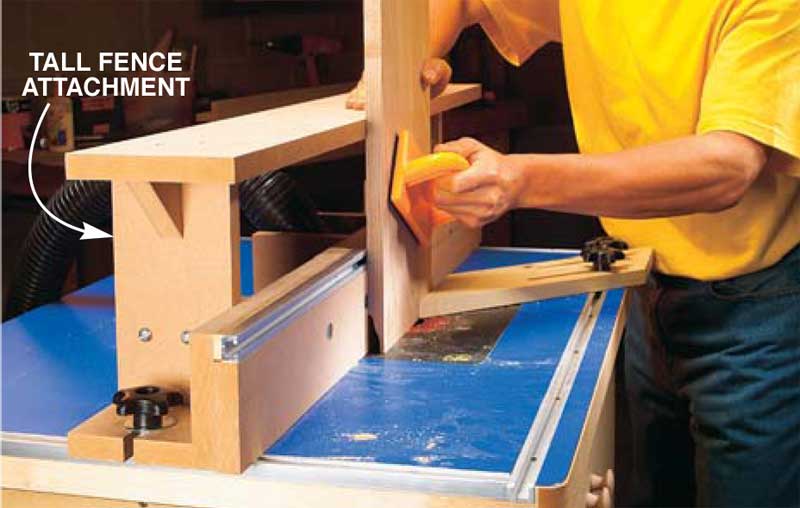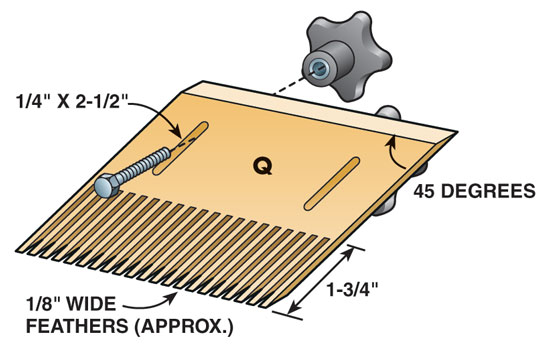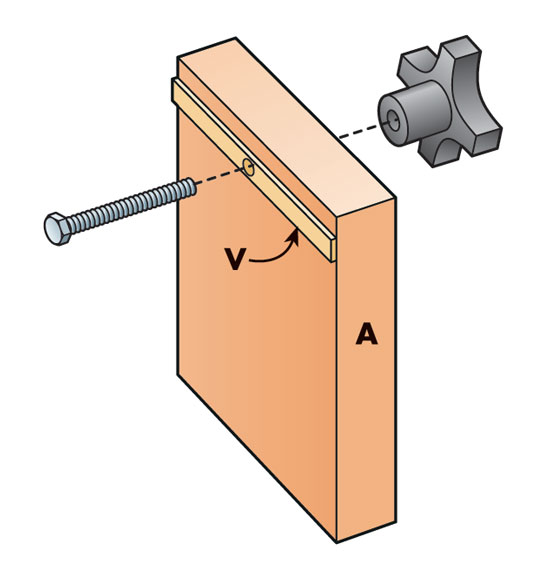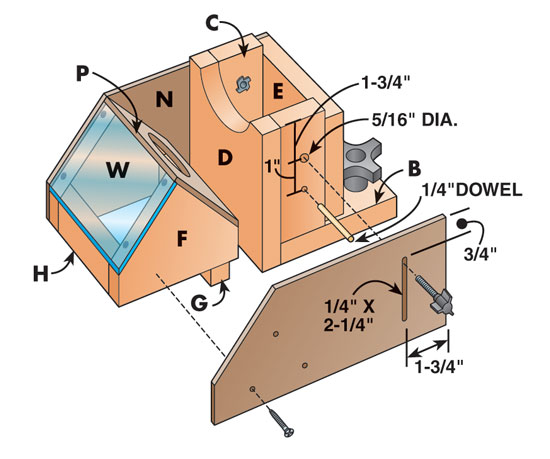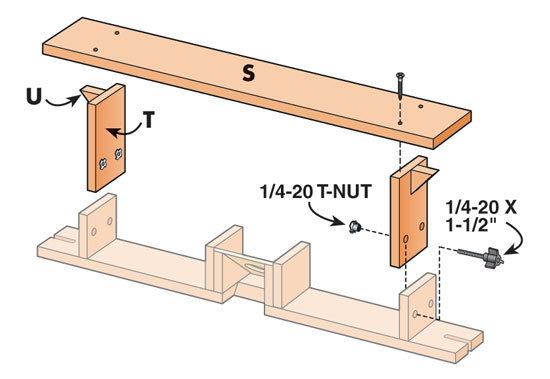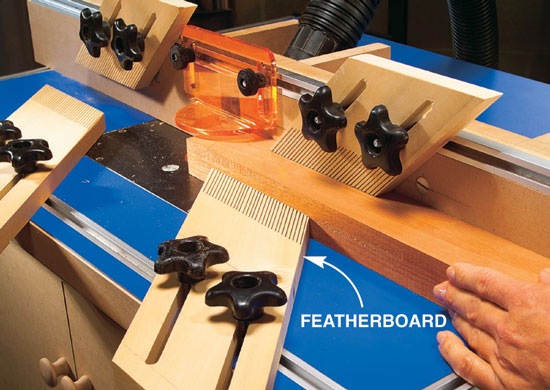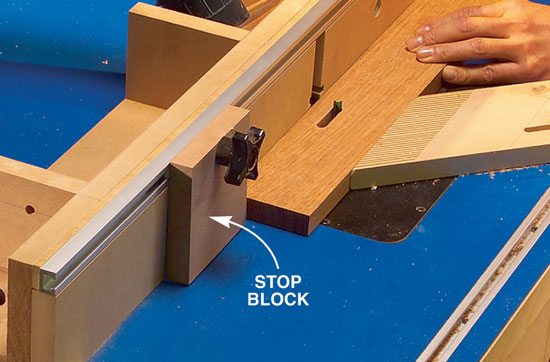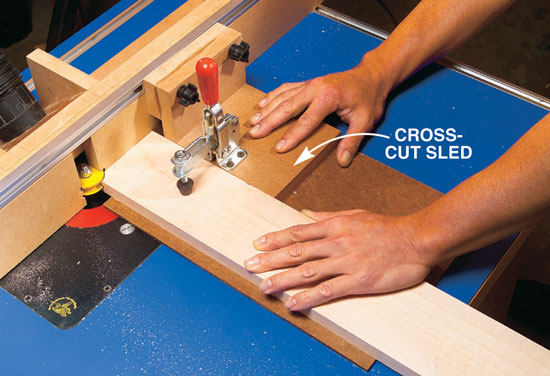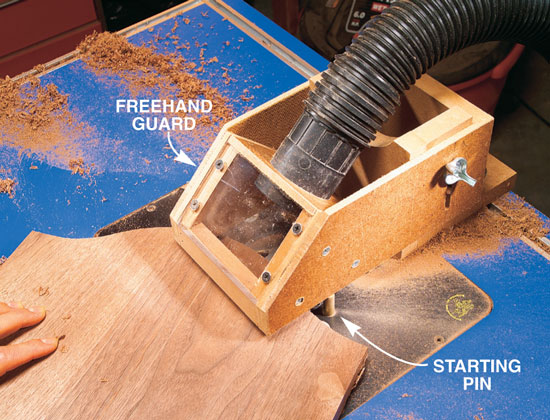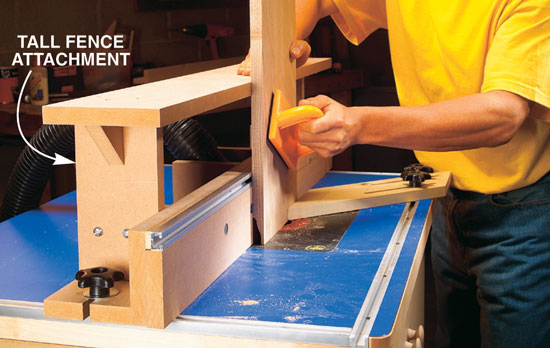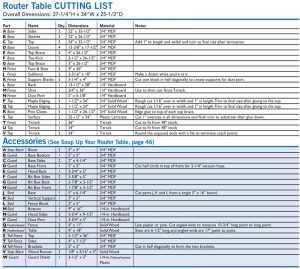Even if you already own a router table, you’ll want to build these
accessories to increase safety expand your routing capabilities and improve your results, Specifically designed for use with the American Woodworker
Router Table, these accessories are easily adapted to use on almost any
router-table system.
Featherboards
Featherboards are like having an extra pair of hands. They’re probably the most
used router-table accessory (Photo 1).

Figure 1: Featherboards
These featherboards are made from clear, solid-wood stock like pine or
poplar. There are two sizes (see Cutting List, below). The longer ones
are mounted on the table and the shorter ones on the fence. Cut the
45-degree angles first. The 1/4-in. slots can be cut on the router table
and the feathers are cut using a bandsaw.
A Stop Block
Stop blocks are a must for making accurate stopped cuts (Photo 2).

Figure 2: Stop Block
Cut hardwood runners (V) wide enough to just fit into the T-track
slot, but not as deep. Glue the strips on the blocks, and drill out for
the 1-1/4-in.1/4-20 hex bolt.
A Crosscut Sled
A crosscut sled eliminates the need for a miter track (Photo 3). The sled slides along a fence-mounted T-track using
UHMW glides.

Figure 3: Crosscut Sled
The only tricky part to making this accessory is getting the holes
for the bolts just right. Simply hold the completed jig up to the fence
with the base on the table and mark the T-track opening. Then, drill
your holes in the center of the marked opening. UHMW T-track slides
guide the sled along the fence.
A Free-Hand Routing Guard
A free-hand guard for safe routing when a fence won’t work (Photo 4). The guard attaches to the T-track at the
front of the table. Routing is done from the back of the table utilizing
the large table space for support of the panel stock. The guard is
adjustable to allow stock of different thicknesses.

Figure 4: Freehand Routing Guard
Assemble the base (parts B, C and D) with glue and screws. Then
build the hood (parts E through H, N, P and W). Slip the hood over the
base and glue the two 1/4-in. guide dowels into the base. The winged
bolts allow you to adjust the height of the hood. Drill two 1/4-in.
holes at the back of the base for the hold-down knobs.
A Tall Fence
A tall fence is provides extra support for vertical routing (Photo 5).

Figure 5: Tall Fence
This tall fence fits between the two outside supports of the main
fence. Build the two supports (U and T) and attach them to the main
fence. Use a square to align the top (S) with the face of the main fence
and secure with screws or winged bolts.
|
|

1. Featherboards make routing safer and better. Safer because they hold
the work against the table and fence instead of your hands. Better
because the constant pressure holds the piece on both sides of the bit
for smooth, washboard-free profiles.
2. A stop block is indispensable for cuts that don’t go the entire
length of the board. Ours mounts on the fence T-track for quick settings
that won’t budge.

3. A crosscut sled replaces the miter slot found on many commercial
tables. It allows you to safely perform end-grain cutting, such as the
cope cut on this rail, without having to set your fence perfectly
parallel to a miter slot.

4. A freehand guard and a starting pin are a must for routing curved
profiles, such as this arch-topped door panel. Dust collection isn’t
perfect, but it keeps the bit area clear.

5. A tall fence makes vertical routing safe and accurate. It provides
plenty of support for work that must be stood on end to rout, such as
drawer joints, lock-miter joints and vertical panel raising.
Click for larger cutting list image.

Sources
Pull from AW #99 Page 98
|



